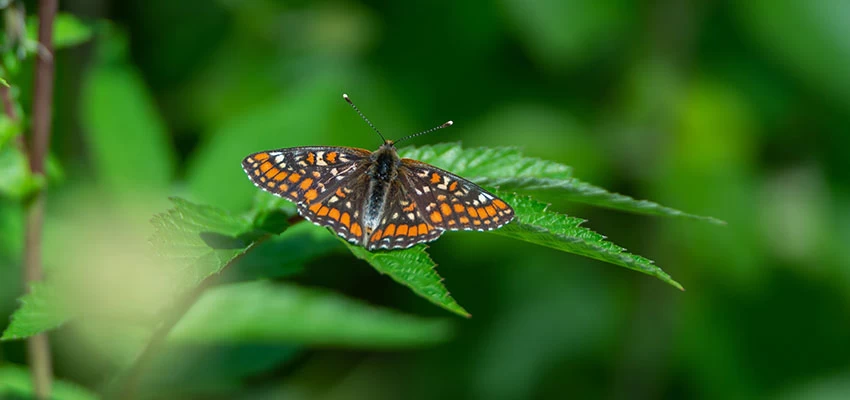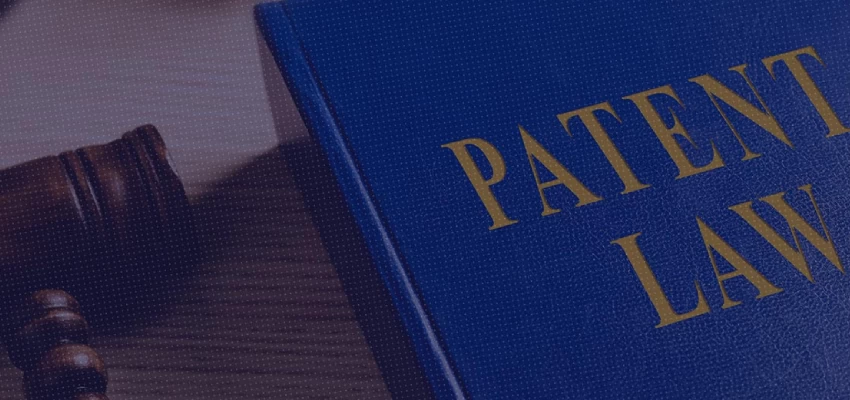Executive summary:
The Delhi High Court vide its recent judgement, while deciding the Applications under Order XXXIX Rules 1 and 2 of the Code of Civil Procedure, 1908 (‘CPC’), restrained the defendants in two separate suits- Best Crop Science LLP and NATCO Pharma Ltd. (‘Defendants’) from launching Chlorantraniliprole (‘CTPR’), an agricultural insecticide in the market, as it prima facie infringed the Plaintiff's, FMC Corporation’s (‘FMC’) patents. FMC, in the said suits, alleged infringement of its product patent IN 201307 (‘IN'307’) and process patent IN 213332 (‘IN'332’).
In a detailed judgement discussing whether an interim injunction should be granted against the Defendants, the Single Judge of the Delhi High Court rejected the challenge, to the validity of the suit patents raised by the Defendants, under several grounds.
The Court declined permission to the Defendants to manufacture and sell CTPR during the pendency of the suit. Finally, the Court opined that the Defendants failed to make a credible challenge with respect to the vulnerability of the suit patents.
Facts:
The suit patents in question, IN'307 and IN'332, are both held by FMC. IN'307 relates to the product Chlorantraniliprole (‘CTPR’) and is due to expire on 13 August 2022. IN'332 is directed to the process of preparing CTPR. FMC also owns patent IN 204978 (IN'978), which was the impugned patent in the dispute. The compounds in Formula 1 of IN'307 were asserted to be a novel and inventive selection, in comparison to the claims in IN'978 which recite a Markush formula. FMC asserted that although CTPR falls within the scope of the numerous compounds, which is covered under the class of anthranilamides included in the Markush formula disclosed and claimed in IN'978 but, emphasized that CTPR is not specifically disclosed in IN'978. Therefore, no person skilled in the art would be able to synthesize CTPR based on the claim and disclosure in IN'978.
In October 2019, FMC learnt of the imminent launch by the Defendants, of a CTPR product. Thereafter, FMC sought a permanent injunction against infringement by the Defendants of the suit patents IN'307 and IN'332.
On the other hand, while the Defendants agreed that they proposed launching CTPR products in India, they claimed that IN'307 is an invalid patent which must be revoked, and therefore, their products do not infringe the suit patent.
FMC’s initial submissions:
FMC asserted that IN'307 claims the actual and precise molecular structure and formula of CTPR, and the method of its preparation. Further, it mentioned that the presence of 3-substituted-2-pyridyl ring, with two substituents on the phenyl ring, results in compounds with superior insecticidal activity, which was substantiated in the ‘Biological Examples of the Invention’, in the suit patent. Thus, the suit patents disclose novel anthranilic diamide insecticides which are ryanodine receptor activators.
It also placed reliance on the declaration filed with the U.S. Patent and Trademarks Office (USPTO), during the prosecution of US 7,232,836 (US'836), the US patent corresponding to Indian patent IN'307. The declaration refers to tests conducted to compare the compounds of the IN'307 with their closest compounds disclosed in IN'978, which demonstrated the superior insecticidal activity of the former. Thus, it was asserted that the CTPR is a novel and inventive molecule.
FMC also asserted that a person skilled in the art could not arrive at CTPR from Formula mentioned in claim 22 in IN'978 without human intervention, ingenuity, and application of hindsight knowledge.
Defendants' assertion:
The Defendants contended that CTPR was covered in FMC's earlier genus/Markush patent, IN'978; thus, the validity of the suit patents was questionable, and no injunction could be granted. The Defendants also pointed out that the IN'978 patent had expired on March 20, 2021, therefore IN'307 and IN'332 were invalid per se. Hence, the Defendants could not be restrained from commercializing CTPR.
Disclosure vis-à-vis invalidity on the ground of obviousness:
The Defendants assertion was primarily that the CTPR was disclosed by the genus patent, i.e., Claim 22 in IN'978. To support this, three contentions were relied upon, namely, (i) that Section 11(2)(b) of the Indian Patents Act, 1970 (the ‘Act’) creates a presumption of the existence of disclosure in a patent to which the priority date has been assigned, (ii) that the FMC had admitted, in their submissions, ‘coverage’ of CTPR by the genus patent; and reliance was made on the judgment of the Supreme Court in Novartis[1], wherein it was held that there can be no dichotomy, or distinction, between ‘coverage’ and ‘disclosure’ in a patent; and (iii) that the preferred embodiments for Claim 22 in the complete specification of IN'978, when applied to the Markush structure claimed therein, ‘led to CTPR’.
Vulnerability of the suit patent IN'307 on the ground of anticipation by prior claiming:
The Defendants contended that Claim 1 of IN'307 fell within the scope of Claim 22 of IN'978 – which includes the claim for the CTPR compound. Therefore, IN'307 would be rendered vulnerable, even if Claim 1 of IN'307 included variants that were outside the scope of Claim 22 in IN'978. In this context, the Defendants concluded that the requirement of the complete construction of the claims in the suit patent and the genus patent, for examining the applicability of Section 13(1)(b) of the Act, is obviated in the present case because of the admission of the coverage of CTPR within Claim 22 of IN'978 by FMC.
The invalidity of suit patent on the ground of anticipation by prior publication and inventive step:
The Defendants based their allegation on the fact that CTPR was within the coverage of the Markush structure of the other related documents, namely, in US'424, US'357, and EP'508 patents, all of which were granted and published before the earliest priority date of IN'978. Hence, they arrived at the conclusion that the suit patent is also vulnerable as it lacks inventive step.
FMC’s response to the defendants' contentions:
Disclosure vis-à-vis invalidity on the ground of obviousness:
FMC responded to the contentions of the Defendants by asserting that IN'978 covers millions of compounds. In any manner, such a Markush claim does not disentitle patenting of any selected compound, which is not recited in the claim, but falls within the scope of the Markush. Thus, if a specific compound is covered in a Markush structure that could nullify the patentability of the said compound, then the concept of genus and species patents would be rendered a nullity. Further, to support the fact that individual species patents which fall within the coverage of the genus patent may be granted, FMC placed reliance on several precedents, namely, F. Hoffmann-La Roche Ltd v. Cipla Ltd[2], Eisai Co. Ltd v. Satish Reddy[3] and Bristol Myers Squibb Holdings v. Emcure Pharmaceuticals Ltd[4].
‘Coverage versus disclosure’ conundrum
FMC also argued that the decision of the Supreme Court in the Novartis[5] would not advance the case of the Defendants, in the first place, for the following reasons:
- The cited case deals with the patentability of the invention specifically in the light of Section 3(d) of the Act. However, the issue in the present case is on the vulnerability of the granted patent, and the onus is on Defendants to show that the patent is vulnerable to challenge.
- The Supreme Court proceeded on the basis that genus patent constituted prior art in Novartis case, whereas, in the present case, for Claim 1 of IN'307 or the CTPR molecule, IN'978 does not constitute prior art.
- There is no clear disclosure of CTPR in the genus patent of IN'978, and in the present case, CTPR, according to FMC, is neither claimed nor disclosed in IN'978.
Vulnerability of the suit patent IN'307 on the ground of anticipation by prior claiming:
Placing reliance on Astrazeneca AB v. Emcure Pharmaceuticals[6], FMC sought to distinguish between that which is ‘encompassed’ in a claim and that which is claimed or covered thereby. Thus, FMC relied upon the fact that Section 13(1)(b) of the Act applies only where, on comparison of claims, the claim in the species patent is found to be identical to the genus patent. Hence, the individual species must be specifically claimed in the prior art.
The invalidity of suit patent on the ground of anticipation by prior publication and inventive step:
FMC opined that none of the referred documents pass the test of the prior art with regards to the disclosure of CTPR. As such, CTPR is not disclosed in any of these patents, namely US'424, US'357, and EP'508. The only road to arrive at CTPR from the disclosure of said documents is by cherry-picking based on hindsight analysis. Hence, FMC refuted the Defendants contention that the CTPR was published.
Court’s view:
Disclosure vis-à-vis invalidity on the ground of obviousness:
The Court noted that the Defendants had accepted that Markush claims are patentable in their written submissions. Therefore, the Court opined that the Defendants cannot rely on Section 11(2)(b) of the Act and arrive at the conclusion that as Claim 22 in IN'978 was patented, there must be a presumption of disclosure of CTPR. It agreed with FMC’s assertion, per contra, that Claim 22 in IN'978 claimed a Markush structure, which does not claim, teach or disclose CTPR, or the Markush structure claimed in Claim 1 of IN'307, even if CTPR may come within the coverage of Claim 22 in IN'978.
After the perusal of complete specification relating to IN'978 and, specifically, Claim 22, the Court held that it could not find any ‘teaching’ which would ‘lead’ a person skilled in the art to Claim 1 of IN'307 or, further, to CTPR. The Court further held that it is apparent that the Defendants have cherry picked the substitutions at 'A', 'B', 'R1', 'R2', 'R3', 'J' and 'R7', as well as the radicals for substitutions at the various places on the 5- membered or 6-membered heteroaromatic rings (as per Para 102 of written submission), out of the myriad possibilities provided in Claim 22 in IN'978, so as to arrive at CTPR, or the Markush structure as defined in Claim 1 of IN'307. However, to enable a skilled person to arrive at CTPR, no reasoning or direction was provided by the Defendants, in terms of selecting these particular substitutions out of the several substitutions provided in the Markush claim in IN'978. Thus, on the basis of Herbert Markman v. Westview[7], the major question focused upon by the Court was:
- Why would a person skilled in the art make the substitutions on the Markush moiety disclosed in Claim 22 of IN'978, out of the several substitutions envisaged in the said claim?
- Does IN'978 teach or instruct a person skilled in the art to effect these particular substitutions in order to achieve the results, or advantages, which CTPR provides?
The answer to the above questions would decide the case of infringement or even for making out a case of vulnerability. In the instant case, it was held that the assertion of the Defendants would not lead to an inference of infringement or even make out a case of vulnerability.
Also, the Court came to a conclusion that no teaching enables a person of skill in the art to synthesize CTPR from the disclosure provided in Claim 22 in IN'978. The rationale used by the Court was that since no effort was made for all the years during which IN'978 was in force, and FMC was the first to synthesize CTPR from the Markush claim, it was not possible to accept that the embodiments provided in Claim 22 in IN'978 would ‘lead’ a person skilled in the art to CTPR.
Further, the Court agreed to the principle that ‘From the teachings in the genus patent, the person skilled in the art must be in a position to arrive, without unduly straining his imaginative and creative faculties, at the species patent, in order for the species patent to be invalidated on the ground of obviousness’. And the Court categorically clarified that the element of directness must be there. ‘The choice which the person skilled in the art would make, by way of substitutions on the Markush moiety or otherwise, must be apparent from the teachings in the genus patent, in order for the species patent to be treated as ‘obvious’. A ‘trial and error’ approach would be antithetical to any suggestion of obviousness.’ Through this, the Court has put forward a test where a person of skill in the art arrives at the species patent from the genus patent without unduly straining his imagination. But this again will vary from case to case.
The Court held that the Defendants would have to establish not only that the substitutions on the Markush moiety, the effecting of which would be necessary to arrive at the suit patent are clearly disclosed in the prior art, but also, additionally, that the prior art contains the requisite teaching which would motivate the person skilled in the art to carry out the said substitutions.
‘Coverage versus disclosure’ conundrum:
The Court pointed out that the framers of the Patents Act did not envisage the ‘claim’ or ‘coverage’ of the claim to be identical to ‘disclosure.’ The Court thus observed that the Supreme Court ‘has not held that coverage and disclosure are the same. Choosing its words with precision, the Supreme Court has held that there is no ‘dichotomy’ between ‘coverage’ and disclosure.’
The Court most aptly mentioned that the Court has examined Claim 22 of IN'978, vis-à-vis the suit patent, and found that the claims of the suit patent were not disclosed or taught or obvious in view of the Claim 22 of IN'978. So, there would be no occasion for the Court to even forage through declarations or assertions made by other patentees or even by FMC while applying for other patents.
It has to be also borne in mind that selection patents, so as to obtain additional or advantageous results, are valid. This position is made clear from Merck Sharp & Dohme Corpn[8] and the judgment of a coordinate Single Bench of Delhi High Court in Bristol Myers Squibb Holdings Ireland Ltd v. B.D.R. Pharmaceuticals International Pvt Ltd[9].
But in the present case, no claim, no coverage, and no disclosure by FMC of CTPR is in the genus patent, i.e., Claim 22 of IN'978. After tedious and painstaking research, it was found that this combination of groups led to compounds with unexpected superior insecticidal activity compared to the insecticidal anthranilamides disclosed in IN'978. Thus, for the present case, there is no question of any dichotomy between claim, coverage and disclosure.
Vulnerability of the suit patent IN'307 on the ground of anticipation by prior claiming:
On the point of prior claiming, the Court pointed out that Section 13(1)(b) of the Act applies where a claim in the suit patent ‘is claimed in any claim of any other complete specification.’ They asserted that any reference either to the scope of the claim or the coverage of the claim does not make any difference vis-à-vis Section 13(1)(b) of the Act. Also, the Court denied taking up the two concepts, namely ‘scope’ and ‘coverage’, relied upon the by Defendants which find no place in Section 13(1)(b) of the Act, and opined that the sequitur of any such coverage could not be that CTPR has been claimed in Claim 22 of IN'978. Hence, it was held by the Court that no prima facie case of invalidity of Claim 1 of IN'307, or CTPR, was established on the ground of anticipation by prior claiming.
The invalidity of suit patent on the ground of anticipation by prior publication and inventive step:
The Court held that neither of the referred patents claims or discloses CTPR. In fact, the Court emphasized that they relate to pharmaceutical patents, relating to pharmaceutical products for therapeutic administration. Therefore, the Markush claims of the referred patents cannot be said to ‘teach’ synthesizing of CTPR. The Court finally concluded that CTPR is not claimed or disclosed in these patents. Thus, sans any claim or disclosure of CTPR, it cannot be said that CTPR was published either in US'424 or US'357 (or, therefore, in EP'508). Regarding the inventive step, the Court agreed with the FMC’s argument and held that there is no explanation given by the Defendants as to why, till CTPR was synthesized by FMC, no other manufacturer, including the Defendants, in spite of so many prior art documents being in existence in the public domain, made any effort for synthesizing CTPR.
Further, the Court relied on twin requirements to make out the case of ‘teaching’, i.e., ‘the defendant would have to establish not only that the substitutions, on the Markush moiety, the effecting of which would be necessary to arrive at the suit patent are clearly disclosed in the prior art, but also, additionally, that the prior art contains the requisite teaching which would motivate the person skilled in the art to carry out the said substitutions’, and held that the Defendants failed to satisfy such requirements, even based on the manifold grounds raised.
Takeaway points:
- The Court clarified that the mere coverage in every case does not result in obviousness. It also confirmed that the patent applications related to selection inventions may be granted, provided they satisfy three conditions, the use of the selected members must result in either a substantial advantage or avoidance of a disadvantage, all the members must exhibit the advantage in question, and that the selection must be based on a quality of a special character peculiar to the selected group.
- It was held that coverage and disclosure are distinct concepts. The Court correctly pointed out the suit patent involved an inventive step considering the prior arts. However, there has been a debatable justification given by Court that CTPR was manufactured from the Markush moiety claim by FMC and no other manufacturer/Defendants had made any effort to manufacture CTPR all these years during which IN'978 remained valid.
[The authors are Principal Associate and Executive Director, respectively, in IPR Team at Lakshmikumaran & Sridharan Attorneys, New Delhi]
- [1] (2013) 6 SCC 1
- [2] Rendered in RFA (OS) 92/2012
- [3] 2019 (79) PTC 568 (Del)
- [4] Order dated 12th December, 2019 in CS (Comm) 684/2019
- [5] (2013) 6 SCC 1
- [6] 2020 (81) PPC 588
- [7][7] 52 F. 3d. 967
- [8] 2015 (63) PPC 257; FAO (OS) No. 190/2013
- [9] 2020 SCC OnLine Del 1700











